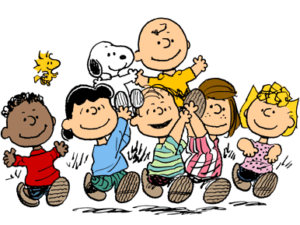Good morning, Whitewater.
Sunday in town will be cloudy with a high of sixty-four. Sunrise is 6:54 AM and sunset 6:32 PM for 11h 37m 56s of daytime. The moon is a waxing crescent with 2% of its visible disk illuminated.
Friday’s FW polls asked readers for the winner of the first presidential debate, whether they would watch the vice-presidential debate, and if they thought a candidate should release his or her tax returns. Respondents said that they thought Clinton won the debate (58.06%), that they would watch the vice-presidential debate (72.73%), and that a candidate should release his or her tax returns (76%).
Whitewater’s annual Crop Walk takes place this afternoon, with registration beginning at 12:30 PM and the walk starting at 1 PM at St Patrick’s Catholic Church, 1235 W Main Street.
Here’s a bit of information on the charitable effort behind the walk:
About the CROP Hunger Walk and CWS
CROP Hunger Walks are community-wide events sponsored by Church World Service and organized by local congregations or groups to raise funds to end hunger at home and around the world.
Background
With its inception in 1969, CROP Hunger Walks are “viewed by many as the granddaddy of charity walks,” notes the Los Angeles Times (Oct. 26, 2009).
On October 17, 1969, a thousand people in Bismarck, ND, walked in what may have been the start of the hunger walks related to CROP – and raised $25,000 to help stop hunger. As far as we know, York County, Penn., was the first walk officially called the CROP Walk for the Hungry – and that event has been continuous since 1970. Several other CROP Hunger Walks occurred soon thereafter, and before long there were hundreds of Walks each year in communities nationwide.
Currently, well over 2,000 communities across the U.S. join in more than 1,000 CROP Hunger Walks each year. More than five million CROP Hunger Walkers have participated in more than 36,000 CROP Hunger Walks in the last two decades alone.
What does CROP stand for?
When CROP began in 1947 (under the wing of Church World Service, which was founded in 1946), CROP was an acronym for the Christian Rural Overseas Program. Its primary mission was to help Midwest farm families to share their grain with hungry neighbors in post-World War II Europe and Asia.
Today, we’ve outgrown the acronym but we retain it as the historic name of the program.
Where do CROP Hunger Walk funds go?
CROP Hunger Walks help to support the overall ministry of Church World Service, especially grassroots development efforts around the world. In addition, each local CROP Hunger Walk can choose to return up to 25 percent of the funds it raises to hunger-fighting programs in its own community.
CROP Hunger Walks help to provide food and water, as well as resources that empower people to meet their own needs. From seeds and tools to wells and water systems, the key is people working together to identify their own development priorities, their strengths and their needs – something CWS has learned through 70 years of working in partnership around the world.
On this day in 1950, Peanuts begins publication:
Peanuts is a syndicated daily and Sunday American comic strip written and illustrated by Charles M. Schulz, which ran from October 2, 1950, to February 13, 2000, continuing in reruns afterward. The strip is the most popular and influential in the history of comic strips, with 17,897 strips published in all,[1] making it “arguably the longest story ever told by one human being”.[2] At its peak, Peanuts ran in over 2,600 newspapers, with a readership of 355 million in 75 countries, and was translated into 21 languages.[3] It helped to cement the four-panel gag strip as the standard in the United States,[4] and together with its merchandise earned Schulz more than $1 billion.[1] Reprints of the strip are still syndicated and run in almost every U.S. newspaper.
The strip focuses entirely on a miniature society of young children, with no shown adult characters. The main character, Charlie Brown, is meek, nervous, and lacks self-confidence. He is unable to fly a kite, win a baseball game, or kick a football.[5]
Peanuts is one of the literate strips with philosophical, psychological, and sociological overtones that flourished in the 1950s.[6] The strip’s humor (at least during its ’60s peak) is psychologically complex, and the characters’ interactions formed a tangle of relationships that drove the strip.
Peanuts achieved considerable success with its television specials, several of which, including A Charlie Brown Christmas[7] and It’s the Great Pumpkin, Charlie Brown,[8] won or were nominated for Emmy Awards. The holiday specials remain popular and are currently broadcast on ABC in the U.S. during the corresponding seasons. The Peanuts franchise met acclaim in theatre, with the stage musical You’re a Good Man, Charlie Brown being a successful and often-performed production.

